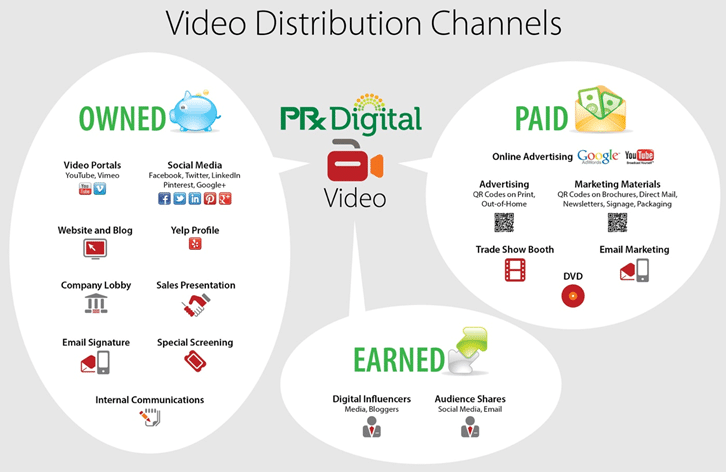Five ways to fine-tune your marketing this year
As we turn the corner into the last months of 2015, it is a good time to look at the marketing strategies employed over the past year and see what worked and what didn’t go as planned. Here are five tips that can add up to better results.
1. Put some fresh eyes on your website
Even if those fresh eyes are yours, take a step back, and look at the homepage and other top-level landing pages on your website. Don’t focus so much on what’s wrong; rather, think about the goals you have for your website. How does your website connect to your marketing and recruitment effort? What does it need to do for prospective students, current students, or any other key audiences you are trying to reach? Then think about this: generally speaking, a website works if it:
- Conveys an attractive brand image;
- Spotlights the school's or agency’s strengths;
- Quickly and easily answers students’ most important questions.
The web is a fluid place and most websites change quickly as new content gets added in. Over time, these additions can overload your key landing pages, and break down important message points or calls to action. The homepage’s purpose is to welcome the visitor. If it weren’t on the Internet, and instead on a campus, it would show the campus’s most impressive room or hall, not too crowded but with a few lovely things to look at and explore. The student would walk in and find a helpful guide at the ready to answer their most important questions, such as:
- "How can I talk to someone about whether I’d feel at home here?"
- "What can I study here?"
- "Can you show me proof this school is worth my investment?"
- "Can I see what other people have said about studying here – can I talk to them?"
- "Will studying here help me get the job I want?"
- "What do I need to do – and when – to have the best chance of getting accepted here?"
Thinking in human terms like this can really be helpful in creating a site that responds the way students want it to. Remember, less is often more on a homepage. It should be beautiful and populated with only your priority calls to action and messages, as well as navigation to important information on the rest of the site.
2. Think about new ways to use video
As we have noted previously, Forrester Research’s Dr. James McQuivey estimates that one minute of video has as much value as 1.8 million words.
And new research shows that students are relying ever more on videos to research schools. A recent Noel Levitz survey among 15-17-year-old American students found that 61% of respondents had viewed online videos as part of their college search – a significant increase from 41% in the 2013 survey. Survey respondents reported as well that student testimonials and campus tours are by far the top video content they prefer to watch when researching colleges.
The widespread adoption of mobile devices is one of the reasons students are watching more video. A new study from the Interactive Advertising Bureau (IAB), an association representing hundreds of technology firms in the US, finds that 35% of respondents surveyed in 24 countries are watching more video on their smartphones compared to 2014, and over a third of those surveyed are watching mobile video content lasting at least five minutes on a daily basis.
Many educators realise the importance of videos to today’s millennials, but they may not be leveraging them to their fullest extent. For starters, they may not be distributing them as widely as possible. The following graphic details all the platforms on which a promotional video might be shared to target audiences.

- Making the About page more human: For example, with the school president or agency director introducing visitors to the campus while dynamic footage appears in the background. The following video shows how the owner of a yoga and dance studio explains her business.
- Vlogging: Vlogging is blogging on video. For example, an agency could vlog about five tips for choosing the right university, or a school could post a tempting vlog with a campus chef making one of the recipes lucky students get to have on their meal plans.
- Showing a school project in motion. For example, showing archaeologists or environmentalists at work on fascinating projects.
3. How are you doing on mobile?
We won’t spend much time talking about how important optimising a website for mobile viewing is, because everyone knows that students are increasingly using their mobile devices for everything. However, we will note that despite all the stats that vividly demonstrate this trend, there are many sites that are still not mobile-ready. Mitch Causey, writing on Jay Baer’s influential digital marketing blog, Convince and Convert, says that:
"Although 31% of global Internet page views occur on mobile devices, 88.2% of websites are poorly designed for these experiences. If your competitors are a part of that 88.2%, now is a perfect time to get ahead."
Mr Causey points his readers to a site called Responsive Test, where companies can see how their sites look on various sizes of mobile screens. He explains what to do after you enter your website address in the Responsive Test viewer: "Hit enter on your keyboard, and see what happens when you view it in different sizes. You can either drag the window sizing, or you can even select from a list of common computers, tablets, and smartphones to see what your site looks like on them. I recommend evaluating a few devices in each category to see if you have an optimal experience." Take a moment to put your website through its paces on this type of testing tool for a fresh look at how your online content is being presented on the ever-expanding range of desktop and mobile devices. And don't forget to check any other important HTML content that you serve online, especially email templates, campaign landing pages, and forms. Each of these elements needs to work as well on mobile devices as your homepage or other top-level pages on your site.
4. Never underestimate the power of a good testimonial
It is a great thing to have a solid bunch of student and alumni testimonials, but even better if each testimonial serves a specific function. Too often testimonials stay lumped on a page rather than used throughout a website to punctuate different content sections. Each testimonial packs a punch so it’s better to spread them out over the pages of a site rather than plunking them all down in one spot. Placing testimonials throughout the site also heightens the chance visitors will see them. Web strategy firm Webpage FX explains:
"Rather than hoping that your site’s visitors are going to click on your testimonials page and read about the great work you’ve done, put some of your most prestigious achievements at the bottom or in the sidebar of every page. By putting testimonials on each page, you can ensure that a large percentage of your site traffic knows how trustworthy your company is, even if they don’t go to your testimonials page."
It’s also smart to make testimonials really stand out. Give them great design treatment and let them take up some serious real estate on the page.
5. Learn some new Facebook moves
Back at the start of 2015, digital marketing strategist Jay Baer predicted:
"It’s already happening, but 2015 will be the year of paid amplification. With content marketing reaching near-ubiquity, the success pendulum will swing toward boosting consumption of content. That will put a new focus on math, testing and optimisation as content production and content distribution become equally important."
In short, it is now very difficult to reach a target audience on Facebook unless you pay for the message by sponsoring it (aka “boosting” it). The good news is, boosting Facebook posts allows you to experiment with messaging and audience, and over time one does end up with a good sense of what content resonates and which falls flat. Beyond boosting, there are other ways to stimulate engagement with your school or business on Facebook. Do you know all the tabs and functions you can add to your Facebook page? Not everyone does. And how about built-in calls-to-action? Hubspot, singling out UT Austin as one of "13 Best College Facebook Pages," notes:
"Not many colleges and universities have taken advantage of Facebook's call-to-action button feature, which lets page admins choose a CTA button from a group of seven pre-made options – "Sign Up," "Shop Now," "Contact Us," "Book Now," "Use App," "Watch Video," and "Play Game" – and link it to any other webpage that aligns with their goals. It's too bad more brands haven't adopted it, considering how prominent it is on the cover photo of a Facebook Page. UT Austin took advantage of the option, though, by placing a "Sign Up" CTA button that links to its newsletter subscription page. This is a great way to capture email addresses from not only prospective students, but also anyone interested in hearing from the university – from students to college counselors to prospective students' parents."

A school could also make the Sign Up link go to an opt-in page for students to receive email, and we all know how important email is still. So there you have it. Five things you can start now for better marketing tomorrow. Please feel free to share your own tips and insights in the comments section below, and happy fine-tuning!
















